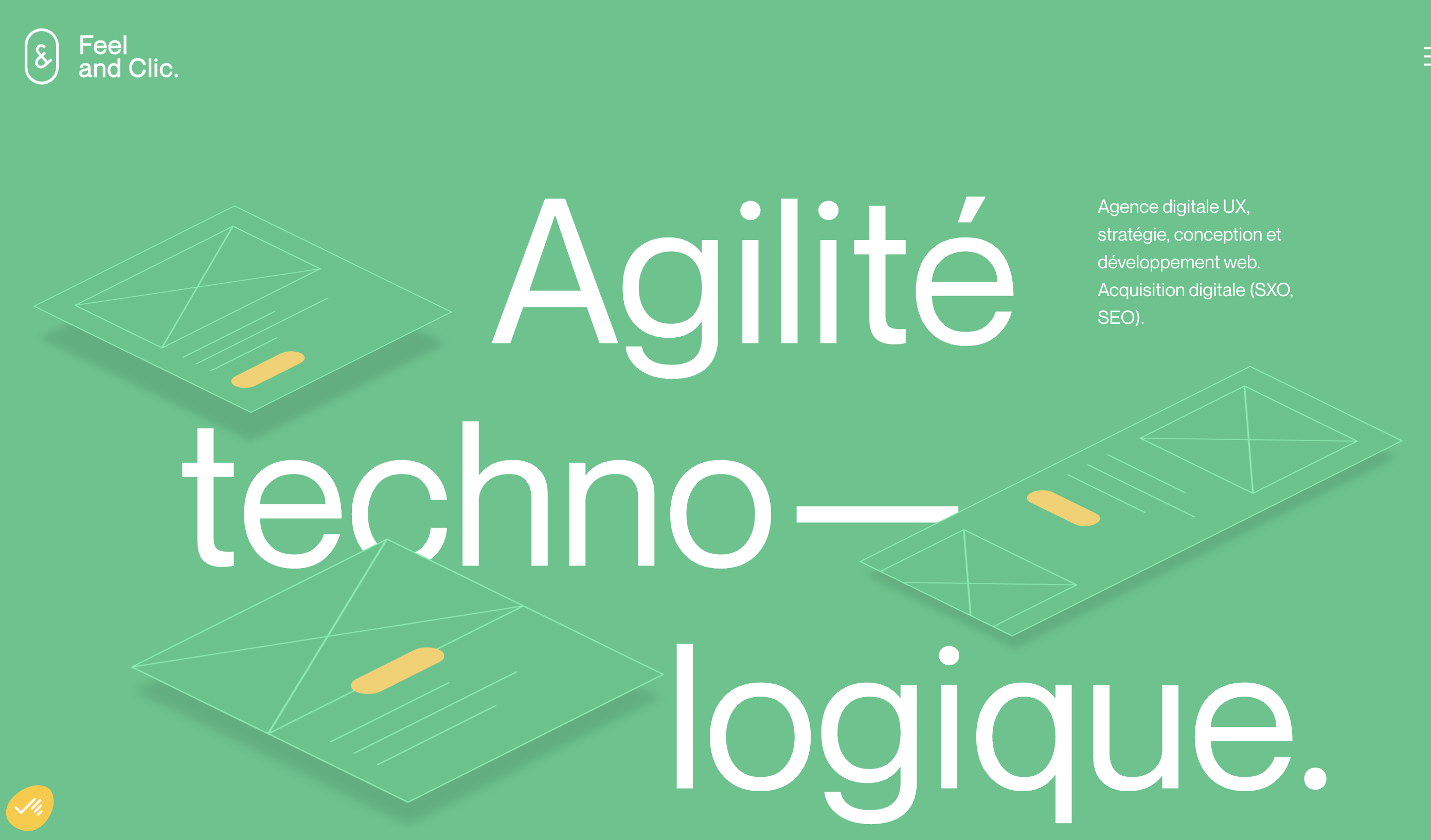
Understanding the Core Elements of Ecommerce Design
Identifying Key Components in Ecommerce Layouts
When delving into the realm of ecommerce design, understanding the core components is crucial for crafting a website that not only attracts customers but also enhances their shopping experience. Ecommerce sites should focus on establishing a seamless user experience that encourages purchases and engages visitors.
Structuring for Optimal User Interaction
Designing an ecommerce site involves more than just aesthetics; it is about creating an intuitive layout that guides users through your store effortlessly. Elements like a clear navigation menu, well-placed call to action buttons, and strategic product placement can significantly influence the overall shopping experience. Each decision made in the web design process should cater to making the customer's journey as smooth as possible.
Emphasizing High-Quality Visual Elements
High-quality images and a clean interface play a pivotal role in ecommerce business. Images should be optimized for quick loading without sacrificing quality to maintain a balance between speed and aesthetic appeal. An engaging visual approach ensures that products are displayed in a manner that highlights their features and appeals to the target audience.
Enhancing Flexibility and Adaptability
With the increasing use of mobile devices for online shopping, ensuring your ecommerce website is mobile friendly is non-negotiable. A responsive commerce website automatically adapts to various screen sizes, providing a consistent experience across devices and improving overall site performance.
User Experience: The Heart of Ecommerce Success
User Empathy and Intuitive Interaction
Creating an online store that resonates with customers requires a deep understanding of user experience. At the core, an effective commerce website is designed to be intuitive, allowing users to navigate easily and find their desired products. Components such as a well-structured navigation bar, clear product categories, and strategically placed call-to-action buttons are integral. Good web design translates to smooth customer journeys, leading to increased conversions, and reflecting positively on the brand's reputation.
Visual and Functional Appeal
The best ecommerce websites seamlessly marry aesthetics with functionality. High-quality images and a clean layout enhance the shopping experience. It's vital that the product display on the site is appealing and informative, enabling users to make confident purchasing decisions. Integrating elements such as product reviews and ratings can also enhance user trust, driving more traffic and sales.
Responsive Design: A Necessity for Modern Commerce
Given the significant rise in mobile shopping, a mobile-friendly ecommerce site is not just a nice-to-have, but an essential aspect of modern commerce. Users demand a consistent and smooth experience across devices, and it's here that responsive design comes into play. Ensuring that your ecommerce site adjusts seamlessly to different screen sizes can enhance the overall user experience, which is critical for retaining customers and maintaining a competitive edge in the ecommerce business landscape.
The Strategic Role of SEO and Loading Speed
User experience doesn't solely rest on visuals or ease of navigation. A well-designed ecommerce website also prioritizes SEO and fast loading speeds to ensure that customers can find the online store quickly and have a frictionless experience. Slow loading times can negatively impact the user journey, leading to higher bounce rates and lost sales. Thus, optimizing the ecommerce site's performance remains a cornerstone of exceptional online store design.
In conclusion, excellent user experience in ecommerce design goes beyond just aesthetics—it's about creating a seamless, mobile-friendly environment that meets user needs and facilitates a delightful shopping experience. By prioritizing these elements, businesses can cultivate loyal customers and drive growth in the competitive online commerce space.
The Role of Mobile Responsiveness in Ecommerce
Emphasizing Device Compatibility in Modern Commerce
As ecommerce continues to evolve, ensuring your site is optimized for mobile responsiveness is no longer optional; it's essential. When we talk about mobile responsiveness, we're focusing on how well a website design adapts to different screen sizes, ensuring that users have a seamless shopping experience whether they're browsing on a desktop, tablet, or smartphone. A well-designed ecommerce site considers the varying devices and screens that visitors use. This means having a mobile-friendly site where images load quickly, navigation remains intuitive, and text is readable without constant zooming. Retail stores are now competing not just for aesthetics but for functionality and accessibility across all digital touchpoints. To achieve this, implementing responsive design techniques is crucial. This includes utilizing flexible grid layouts that adjust to the screen size, scalable images, and considering touch-friendly navigation elements. Even more, a high-quality design workspace can facilitate the creation of such responsive designs. It's not only about adapting the site for various screen sizes but also about ensuring that the user experience and the overall commerce process remain smooth and engaging. Remember that customers expect high-speed performance, as addressed previously, alongside a mobile-friendly experience. In an era where online shoppers are often accessing ecommerce stores via mobile devices, a site that isn't mobile-friendly risks losing a significant portion of its audience. Businesses must therefore prioritize mobile responsiveness within their overall ecommerce strategy to maintain their competitive edge in digital commerce.Incorporating Visual Storytelling in Ecommerce
Crafting a Compelling Visual Narrative
In the digital realm of ecommerce, telling a story isn't just about words—it's about painting a vivid picture that resonates with the audience. Visual storytelling is a powerful tool in website design, offering customers an immersive shopping experience and connecting them on a deeper level with the brand. As you delve into enhancing your ecommerce business, consider the following elements when crafting your site's visual narrative:- Product-centric Imagery: High quality product images can significantly influence a user’s decision to engage with your ecommerce site. Highlight your products in various contexts, which not only showcases their features but also allows customers to envision their usage. By creating a strong visual appeal, you elevate your commerce website to stand out among competitors.
- Consistent Visual Elements: Consistency is key in ecommerce websites. By maintaining uniformity in colors, fonts, and design motifs across your online store, you cultivate a cohesive brand image. This seamless integration not only enhances the user's shopping experience but also reinforces brand recognition and loyalty. Don’t forget to consult a color psychology guide to ensure your design choices resonate with your target audience.
- Incorporate Video Content: Video is an engaging medium, perfect for captivating the attention of today’s mobile-savvy consumers. A product demonstration or a behind-the-scenes look at your brand can offer invaluable insights, fostering an authentic connection with users. This dynamic approach ensures your ecommerce design is not just visually appealing but also informative, offering customers a comprehensive view of your offerings.
- User-generated Content (UGC): Integrate UGC into your site to build trust and community. Featuring images and videos from satisfied customers can serve as powerful testimonials and encourage new visitors to become loyal customers. It’s a genuine approach that showcases real-life shopping experiences and enhances the authenticity of your ecommerce site.
The Impact of Speed and Performance on Ecommerce Design
Optimizing Load Times for Seamless Shopping
In the competitive landscape of ecommerce, speed is not just a luxury but a necessity. Every second a webpage takes to load can significantly impact the shopping experience and determine whether a customer completes a purchase or abandons their cart. Consider how ecommerce websites have evolved to prioritize quick loading times. It's essential for websites to present their products quickly to potential customers lest they lose interest. High-quality images are important, but it's crucial to find a balance between visuals and speed, ensuring images do not slow down load times. Businesses must recognize the crucial role of faster website performance in attracting and retaining customers. A fast ecommerce site can significantly impact the brand's reputation and user satisfaction. Furthermore, an efficient and quick shopping experience often translates to improved rankings in search engines, making speed a critical component of good SEO.The User's Journey: From Click to Conversion
The streamlined performance of the ecommerce store addresses the user's need for quick and smooth shopping from start to finish. When an online store is optimized, user frustration can decrease, leading to a more positive perception of the brand. Meeting customer expectations in terms of speed and efficiency often leads to better conversion rates. Ensuring the seamless functionality of the shopping cart and other critical interactions on the site can significantly affect this outcome. Speed improvements empower users by enabling them to focus on products rather than waiting for an ecommerce website to load. In summary, optimizing for speed and performance must be an integral part of ecommerce design strategy. Website design that prioritizes performance undeniably contributes to an ecommerce site's success, allowing businesses to thrive in an ever-competitive market. Effective optimization ensures that your ecommerce business and its customers have a good shopping experience at all times.Analyzing the Best Designed Ecommerce Sites
Showcasing Exemplary Design in Popular Ecommerce Platforms
In the realm of ecommerce, standing out is paramount. Some online stores have mastered the art of ecommerce design, setting benchmarks for others to follow. These platforms are not just about selling products, but providing a holistic shopping experience that reflects the brand's identity, caters to the user's needs, and is seamlessly navigable across devices. As we've discussed earlier, core elements such as user experience and visual storytelling are essential in achieving a compelling ecommerce design. But how do these translate when looking at some of the best designed commerce websites?- Seamless User Navigation: Successful ecommerce sites often prioritize ease of navigation. Top-tier sites guide users through their shopping journey with intuitive designs. This ease in navigation complements the user's journey, enhancing their experience and making the site attractive to return to.
- Compelling Visual Storytelling: Strong imagery and consistent brand aesthetics are key. High-quality images and well-thought-out design layout can create an emotional connection with the customer. It aligns with what we've recognized about integrating visuals into the design.
- Mobile Optimization: With the mobile-first approach becoming a necessity, the best ecommerce websites make sure that their platforms are mobile friendly. The shopping experience should be equally efficient, whether accessed from a desktop or a mobile device.
- Call to Action: A compelling call to action drives conversions, serving as an essential bridge between browsing and buying. Good ecommerce design understands the power of properly positioned calls to action, using them to nudge customers towards completing their purchase.
- Streamlined Checkout Process: A smooth and efficient shopping cart experience can significantly reduce cart abandonment rates. The ability of a commerce website to simplify the checkout process can make or break the transaction.















